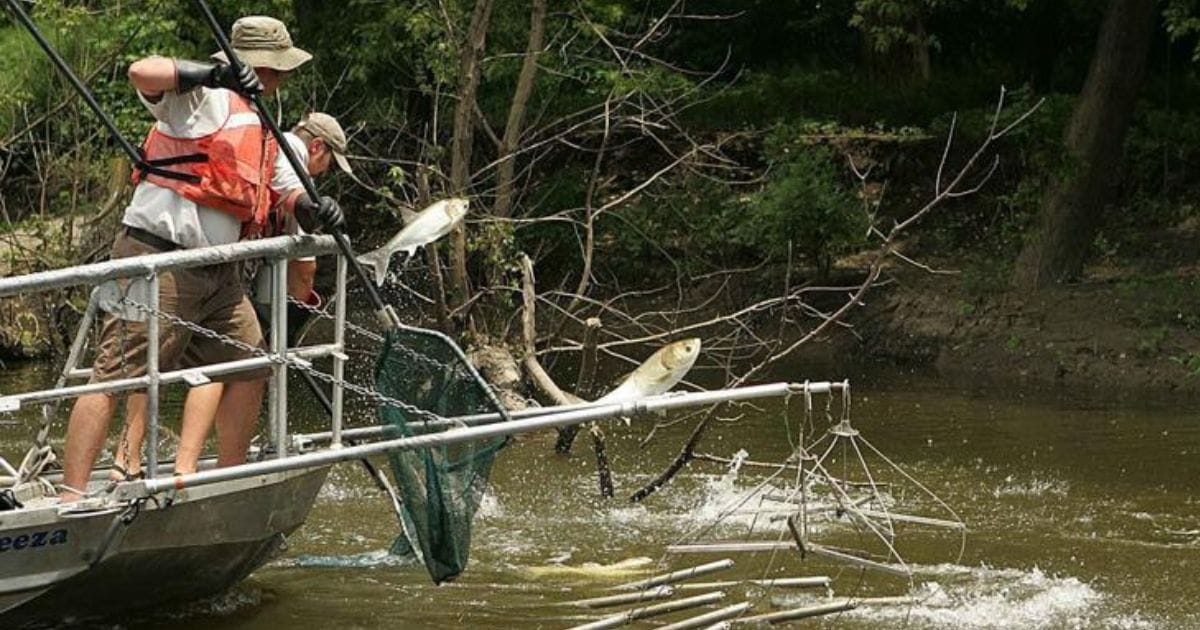Photo courtesy of the U.S. Fish and Wildlife Service
An effort to protect the Great Lakes from an invasive species hit a milestone recently with the harvesting of some 750,000 pounds of invasive carp from the Illinois River.
Temperatures and water levels proved favorable for the harvest from Nov. 28 to Dec. 6, which depended on silver and bighead carp congregating and becoming easy pickings for a huge seine net. Last year, the operation netted 350,000 pounds from the river’s Starved Rock pool.
Allie Lenaerts, a large river ecologist for the Illinois Natural History Survey, a research institution on the campus of the University of Illinois Urbana-Champaign, told The Center Square it is critically important to control these invaders.
Of the four invasive carp species, the silver and bighead are the biggest problem. They feed on the bottom of the food chain, eating things like plankton, which then becomes scarce for native species like gizzard shad and paddlefish.
“All fish when they hatch are usually eating the same food sources. So, they’re competing directly with native fish,” she said.
And in the battle for food, the silver and bighead are likely to win. Described as prolific spawners, they can outgrow predators within a year, Lenaerts said.
“They also might affect the fishery in the Great Lakes if they do get to the Great Lakes,” Lenaerts said.
With its commercial fisheries, the Great Lakes would be vulnerable if non-native fish entered its waterways, as Lenaerts said, “It could crash the fisheries in the Great Lakes.”
As for the origin of this invasive species, she said, since the 1970s and 1980s, because of flooding, carp being used to clean water at a catfish facility infiltrated the Mississippi River and eventually reached the Illinois River. These annual net operations help to control the population through the Illinois Department of Natural Resources, the Illinois Natural History Survey and commercial fishermen with a boost from federal tax funds.
“As long as conditions are suitable, we’ll be doing this again next year,” Lenaerts said.
Most of the fish harvested become fertilizer, but someday they could be more desirable.
Lenaerts said there is a push to overcome carp’s bad rap with the new name Copi, and serving it as a tasty restaurant dish. Certain varieties do not have a strong fishy taste that often is associated with bottom feeders.
“There’s been a negative stigmatism toward the word carp,” which the renaming campaign is endeavoring to overcome, she said.
This article originally appeared on The Center Square.






